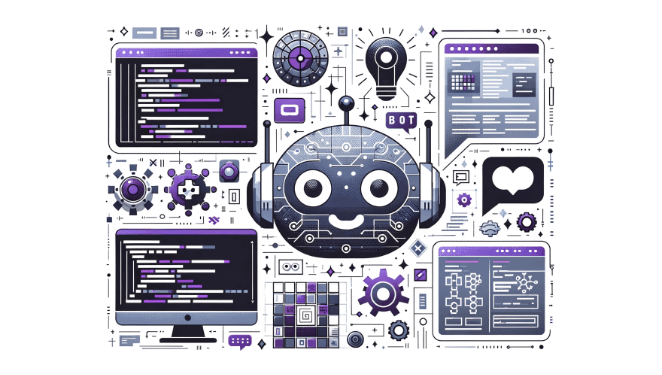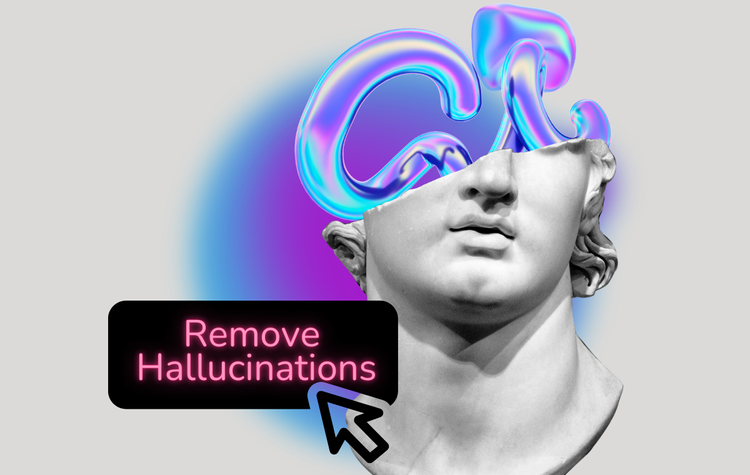How to Build a Chatbot
Believe it or not, it's easy to build a generative AI chatbot. But it's difficult to prevent the chatbot from hallucinating. For a non-hallucinating generative AI chatbot, try Gleen AI.

Introduction
Navigating through today’s dynamic digital ecosystem has become easier with modern AI-based solutions. Companies worldwide recognize the importance of generative AI chatbots for more efficient customer service and engagement.
Statistically speaking, a single chatbot can handle 69% of customer queries from start to end. It helps reduce the cost of customer service, improve its quality, and amplify the service process.
If you haven’t already deployed an AI chatbot on your website, now is the right time to do it.
This article will give you an overview of how to build a chatbot in a few simple steps. We'll also discuss an alternative to building your own chatbot.
Step 1: Organize and Format Your Existing Knowledge Base
Before leveraging a GPT-4 for your business, it’s essential to understand your relevant support knowledge base.
This knowledge base could consist of FAQs, support docs, product guides, wikis, resolved tickets, and forums.
To build a chatbot, you need to organize and format your existing support knowledge so that the chatbot can use it.
You can use the following sub-steps:
(1) Centralize Your Knowledge
In order for you and the chatbot to access your company’s collective knowledge base, it should be in one central location. You can access information from various sources in a secure and user-friendly database. These sources include cloud storage and a server.
(2) Standardize Your Knowledge
Ensure that all of your data follows an identical structure or format. This is important for teaching the AI model, as it helps the model understand and learn from the data better.
(3) Clean Your Data
Not everything in your knowledge base is important.
So, before giving access to the AI chatbot, remove any irrelevant, unnecessary, or conflicting information. The purpose of cleaning your data is to ensure that the data is accurate and relevant to the needs of your customers.
If your data is already centralized, standardized, and clean, skip these 3 steps above.
Step 2: Create an Account on OpenAI
The next step of how to build a chatbot is creating an Open AI account, which is not free.
To make your own AI, create an OpenAI account to access GPT-4 through an API.
OpenAI charges you based on the number of words or tokens you send to GPT-4.
You can also use GPT-3.5, which is less expensive to operate than GPT-4. However, the responses from GPT-4 are much better than GPT-3.5.
You can also use any other commercially available LLM, like Llama 2 or Claude from Anthropic.
Step 3: Tokenize and Create Embeddings
The next step is to prepare your data.
Tokenization
You need to break down all the text you have in your knowledge base into smaller pieces, a process called tokenization.
This means splitting each document into smaller parts.
Each of these smaller parts, or "sub-documents", should be about 300-400 words long.
Why do you need to do this?
GPT-4 has a limit to how much it can handle at once. The basic version of GPT-4 can only process 8192 tokens (which is approximately 6,400 words).
If your knowledge base is extensive, you can use the more advanced version of GPT-4 which can handle 32,000 tokens, but it costs more.
The total number of tokens in both the question asked and the context around the question is less than 8,192 tokens.
This limit determines how many of these sub-documents you can give to GPT-4 at once.
Generate Embeddings
Next, take each sub-document and send it to a model called text-embedding-ada-002 through its API.
text-embedding-ada-002 will then create embeddings for each sub-document.
Think of these embeddings as a way to change all the words in the sub-document into sets of numbers. The numbers make it easier for computers to understand and use them.
Step 4: Implementation
Once you successfully embed your tokens, you must implement them. Implementing the embeddings involves:
- Making an interface to apprehend your customer’s request.
- Sending the request to text-embedding-ada-002 model via API to get the request’s embeddings.
- Finding similar documents in your knowledge base by comparing their embeddings to the embeddings of the request.
- Sending the text of the request and the most similar documents to GPT-4 via API.
- Waiting up to 30 seconds for the response, and displaying the response.
And that’s it.
The first basic version of your customer success generative AI chatbot is now up and running.
Beware of Hallucinations
Knowing how to build chatbots is not enough for enhanced customer success. Most generative AI chatbots are prone to hallucination, so you need to be extremely cautious.
Hallucination is when a chatbot simply makes up facts that have no origin in your company’s knowledge base.
To utilize generative AI for customer support, you'll need more than just chatbot building skills. You'll need to prevent hallucination.
What Causes Hallucinations?
Large Language Models (LLMs) like GPT-4 simply predict the next most probable word in a conversation. But the LLM has no way of know if the response it generates is factually correct.
Any generative AI chatbot that uses an LLM to generate a response will also hallucinate.
Can You Avoid LLM hallucination?
Hallucinations are a built-in feature of LLMs. Every LLM will hallucinate, including:
- Custom-made LLMs
- Fine-tuned LLMs
- Chatbots with "non-hallucinating prompts," like "Ensure that you generate every answer supported by documentation."
Even if all LLM training data is factually correct, an LLM can and will still hallucinate.
That's because LLMs aren't databases containing facts. They are simply neural networks that model language. These neural networks are good at deciphering questions and generating human-like responses.
But those may or may not be accurate.
How can You Avoid Hallucination?
You can't avoid LLM hallucination. You can, however, still build a chatbot that doesn't hallucinate.
Creating a non-hallucinating chatbot will take significant time and effort.
First, your chatbot needs proactively prevent hallucination. Your chatbot needs to be exceptional at finding the most relevant documents in your knowledge base.
Second, your chatbot needs to proactively detect hallucination in responses.
When your chatbot detects a hallucination, it should respond, "I wasn't able to find an answer in the provided documentation."
To prevent hallucinations in your chatbot, you'll need a software development team to build and maintain the chatbot.
Alternative: Use Gleen AI
Instead of hiring a team, use Gleen AI, an commercial AI solution, to avoid hallucination in software development.
Simply visit Gleen and build a non-hallucinating generative AI chatbot for free in less than 2 hours.
How Gleen Prevents Hallucination
Even though Gleen uses GPT-4 at the core, Gleen’s generative AI chatbot does not hallucinate.
Gleen has built a whole system surrounding GPT-4 to prevent hallucination. 80% of Gleen AI is focused on preventing hallucination.
This system uses AI and machine learning to make sure Gleen AI responses are hallucination free.
Try Gleen AI and see for yourself. Create a free version of Gleen AI now, or request a demo of Gleen AI.



